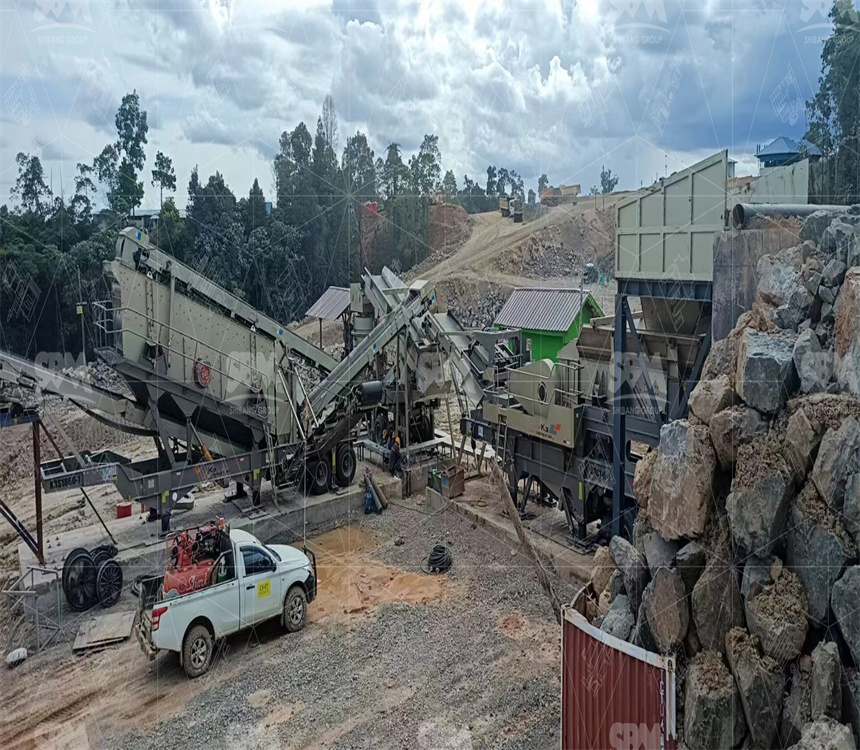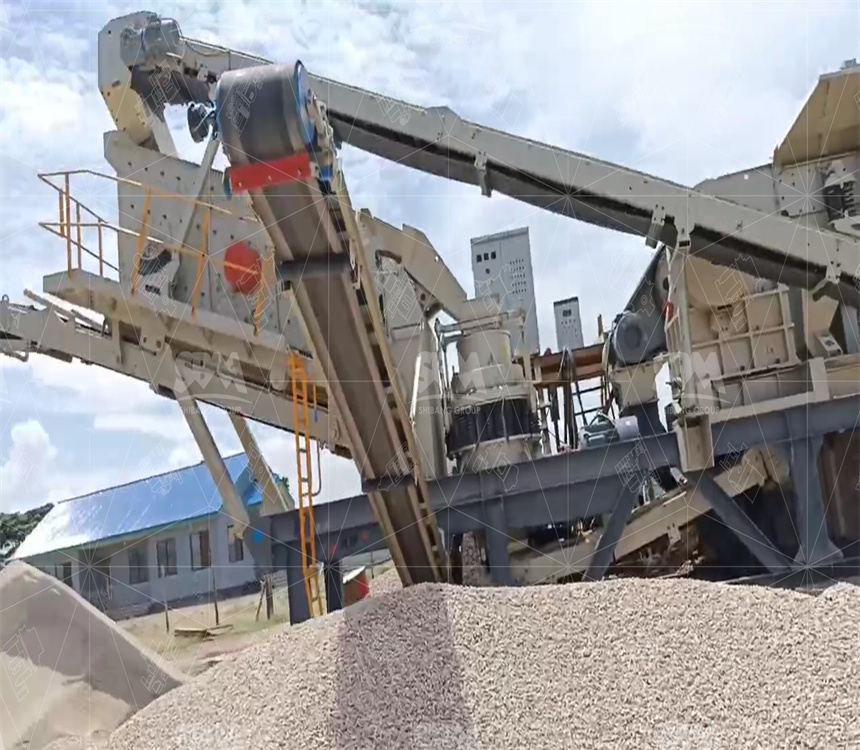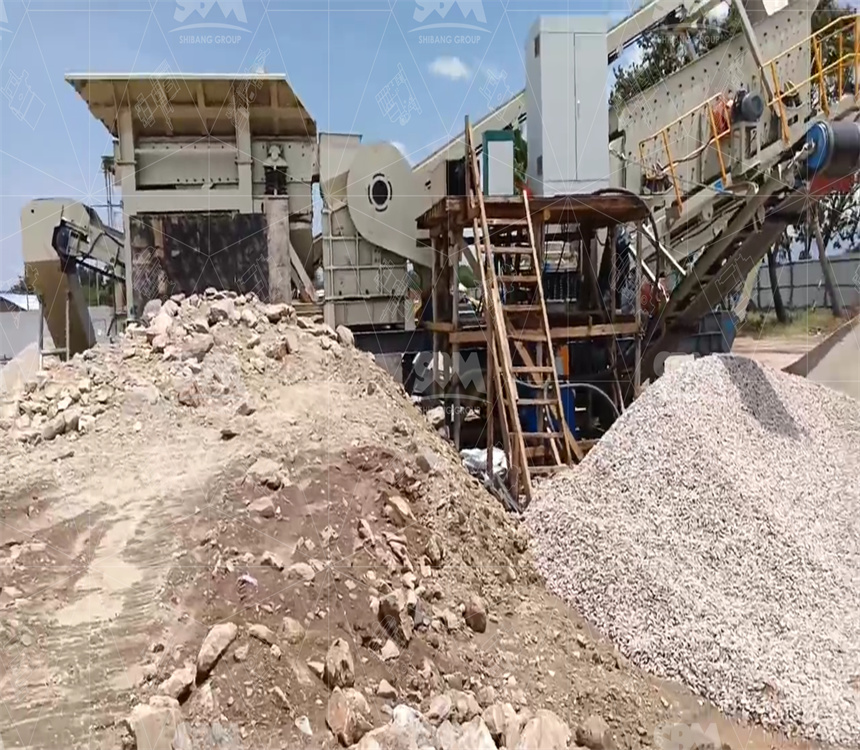Abstract: In Zimbabwe’s gold mining scene, portable jaw crushers present a flexible, efficient, and cost-effective solution for on-site crushing of gold ore. This article explains the principles, structure, key parameters, selection guidelines, and real-world case studies. We draw on over 30 years of experience in equipment export and field deployment, and use authentic data from SBM’s product lines to ensure credibility. Through this, we affirm our authoritative position in the mining equipment domain.

In Zimbabwe’s remote gold mining operations, transporting raw ore to distant fixed plants raises cost, time, and logistical risk. A portable jaw crusher (a mobile primary crushing unit) placed near the mining face greatly reduces haulage, speeds up processing, and improves flexibility. A well-matched portable jaw crusher can handle gold ore characteristics (hardness, abrasiveness, moisture) common in Zimbabwe, and deliver stable throughput with manageable maintenance.
“Portable jaw crusher” refers to a jaw crusher mounted on a mobile chassis (truck, track or skid), complete with feeder, conveyor, power drive, control cabin, and support structure. The core crushing unit is a jaw crusher model, drawn from reliable product lines such as the PE, PEW, C6X series. For gold ore, feed sizes often reach 500–800 mm (depending on mining face), and target output for secondary or grinding might require < 50 mm or < 25 mm after further crushing. The portable unit must meet these demands while keeping energy consumption, downtime, and wear acceptable.
In the global crushing market, SBM is considered among China’s leading manufacturers, with strong overseas presence, complete crusher + screening solutions, and R&D capability equivalent to first tier. (In ranking surveys of Chinese crusher makers, this brand consistently appears in top-10 lists.)
A jaw crusher uses a fixed jaw and a movable jaw to compress and break materials. The movable jaw swings back and forth using an eccentric shaft, causing the material to be crushed between the two jaws and discharged at the bottom once it is smaller than the set gap (CSS/OSS). The mechanism is analogous to a nutcracker or lever. Many details and improvements have been developed over time.
Key mechanical features:
Thus the overall power needed is influenced by feed hardness, feed size, capacity, speed, and crusher efficiency. In practice, we choose a margin of 10–20% extra capacity for safety in mobile operations.

From SBM’s product range, the following lines are especially relevant for portable jaw crushing in gold mining:
In a mobile context, one may mount a PEW or C6X onto the frame as the core crusher. Below is a comparative table of representative models:
| Model | Input Size (mm) | Capacity (t/h) | Remarks |
|---|---|---|---|
| PEW series | 0–930 | 12–650 | European style, hydraulic adjustment |
| PE series | 0–1020 | 45–800 | Classic design, stable |
| C6X series | 0–1280 | 160–1510 | Large capacity, integrated compact |
For a Zimbabwe gold mining portable unit, typical daily feed might be 200–600 tph depending on mine scale. Thus, mobile models using PEW or C6X variants (e.g. C6X with smaller frame) are logical choices.

Gold ore in Zimbabwe is often embedded in quartz, sulfide matrices, or occasionally in hard host rock. The ore hardness (e.g. Mohs 6–7, uniaxial compressive strength up to 200–250 MPa), abrasiveness and possible presence of clay or moisture require robust design and careful operation. The crushing circuit must be set to minimize over-fines generation and protect downstream grinding.
A typical portable crushing circuit for gold ore might be:
For example, one mobile unit might process 300 tph of gold ore with feed size up to 700 mm, produce 0–50 mm primary discharge, then send 50–150 mm fraction to secondary crusher (e.g. cone) for further reduction to < 25 mm for milling.
In designing this, we must control: energy consumption (kWh per tonne), wear rate, downtime, and foot print. In real deployments we have observed specific energy consumption ~1.5–2.5 kWh/t in primary stage, wear liner life ~3,000–5,000 hrs (depending on ore abrasiveness). Downtime rate (planned + unplanned) kept under 5 % with strict maintenance discipline.
Selecting a portable jaw crusher for gold mining must follow a decision tree approach:
In selecting among SBM models, one often chooses a PEW variant for small to medium mines (< 300 tph) and a compact C6X variant for larger operations, mounted as a mobile or modular plant.
One also must consider modular / plug & play design (e.g. SMP modular mode) and IoT / remote monitoring support, which reduce on-site labor and improve uptime.
Below are two project snapshots (names pseudonymized) where portable jaw crushers based on SBM technology were implemented in Africa / Zimbabwe region.
Mining company in Midlands had scattered shallow gold veins in quartz matrix, feed size up to 600 mm, target throughput 120 tph. They selected a mobile jaw crusher unit using a PEW-600 model integrated with feeder, screening and conveyors. The CSS was set to 40 mm, output ~0–40 mm, feeding mill after scalping. Over 12 months, average throughput 110–130 tph, energy consumption ~1.8 kWh/t, liner replacement interval ~3,800 hr, downtime <3 %. This proved mobile jaw crushing viable for small gold operations.
At a larger mid-scale mine, they deployed a portable jaw + cone crushing line. The core jaw was a compact C6X variant (suitably scaled) handling feed size up to 900 mm, throughput ~300 tph. The portable jaw stage delivered 0–50 mm; secondary cone crushed to < 20 mm. Field records: energy ~2.2 kWh/t at jaw stage, liner life ~4,500 hrs, scheduled maintenance every 500 hrs, unscheduled downtime ~4 %. The company praised flexibility of relocation seasonally with deepening pit, and ease of maintenance under Zimbabwean site conditions (limited infrastructure).
These on-site experiences validate our design philosophy: robust, modular, maintainable, and energy efficient.

To ensure the portable jaw crusher operates reliably in Zimbabwe’s climate (dust, heat, humidity), one must manage and optimize these aspects:
From field deployment over decades, the failure rate (unplanned) can be suppressed to below 2–5 % annually if above practices are rigorously followed. Planned maintenance accounts for 3–6 %. Combined, total downtime under 8 % is achievable.
To conclude, portable jaw crushers tailored for Zimbabwe gold mining offer compelling advantages in flexibility, cost savings, speed, and local adaptability. But to extract full value, one must match the crushing unit carefully (capacity, feed size, drive, mobility) and operate with disciplined maintenance.
My confident recommendations based on decades of export and field experience to you (as equipment provider or buyer):
With these, your portable jaw crusher solution for gold mining in Zimbabwe can truly stand out in the market. I maintain full confidence this technical approach and data-driven style will win trust from mining clients globally.
Whatsapp:+8617329420102
Email: [email protected]
Address: No. 1688, Gaoke East Road, Pudong new district, Shanghai, China.
Online Service : Get Price
We value your feedback! Please complete the form below so that we can tailor our services to your specific needs.
